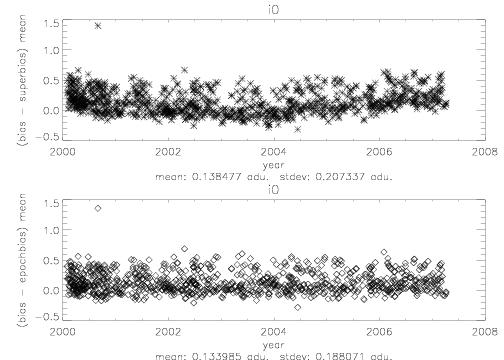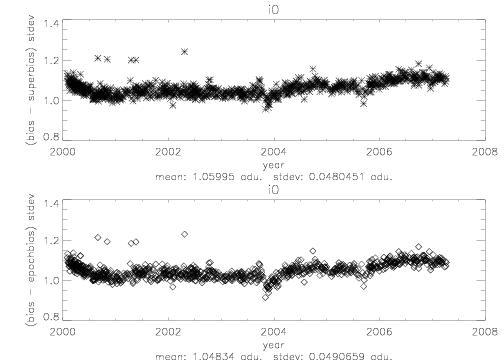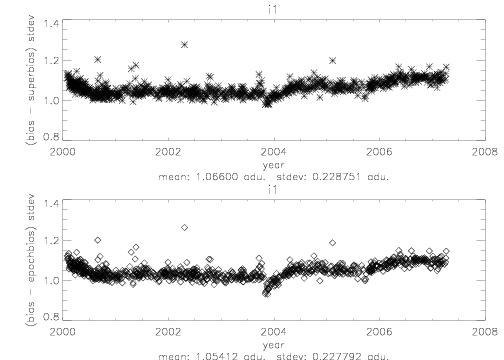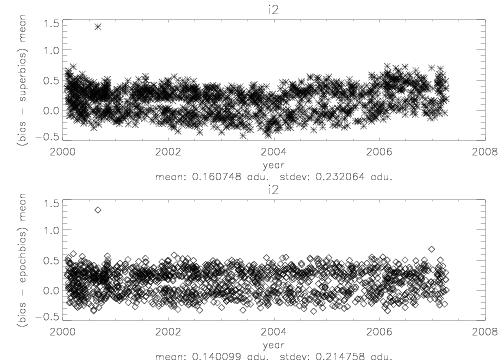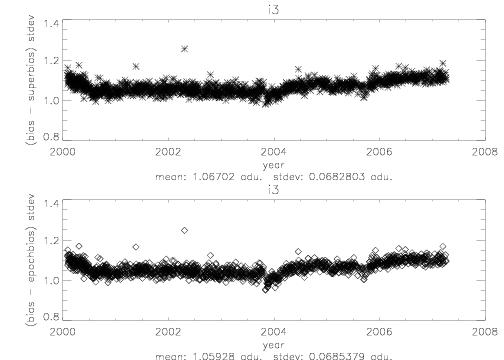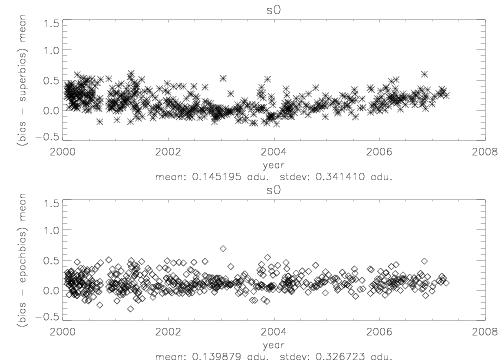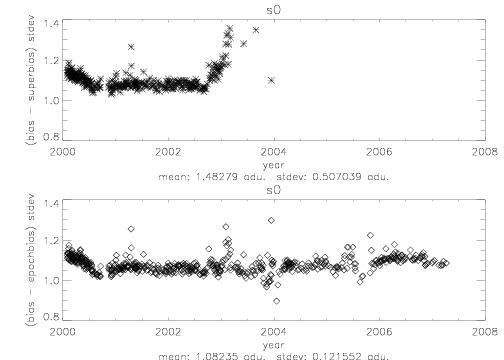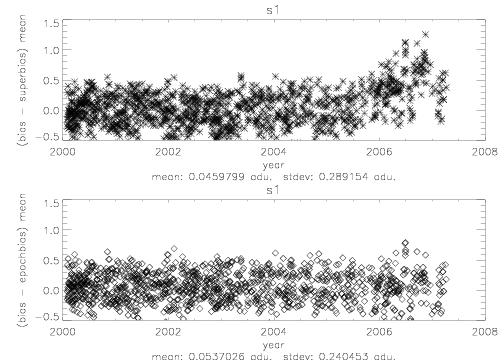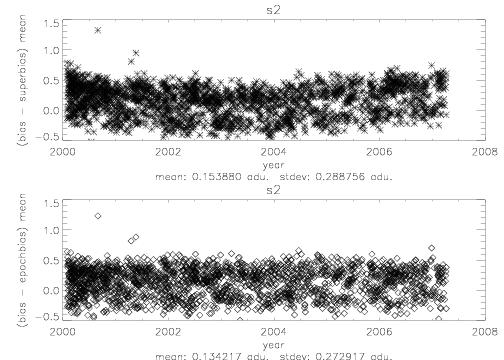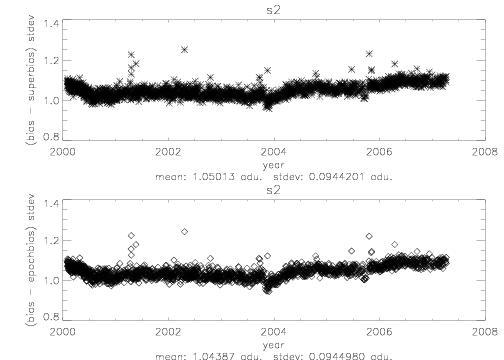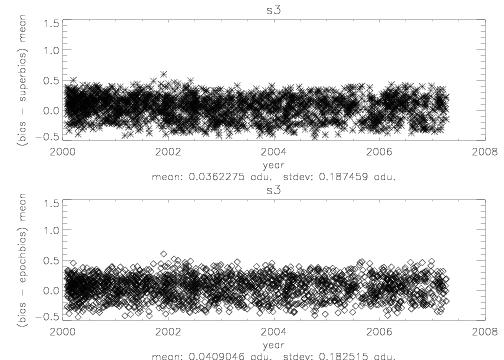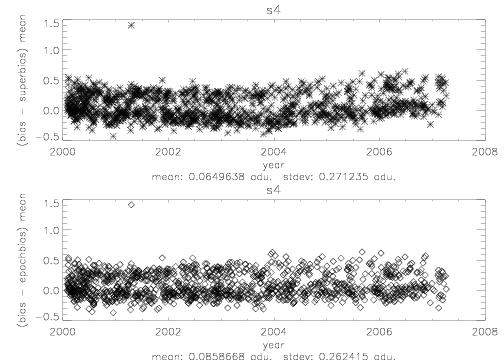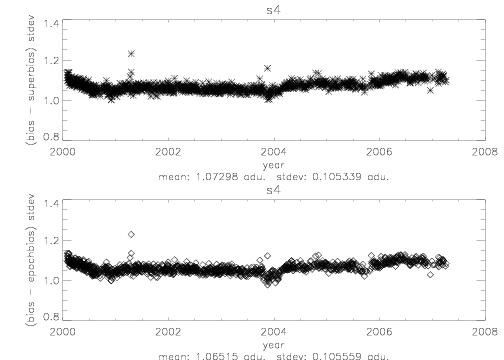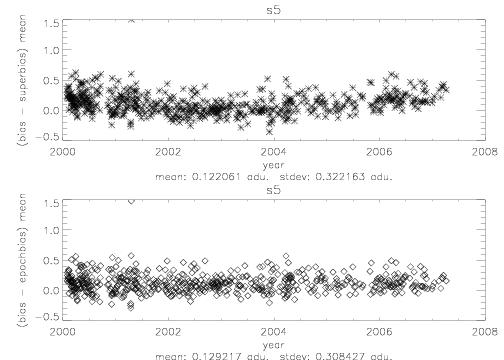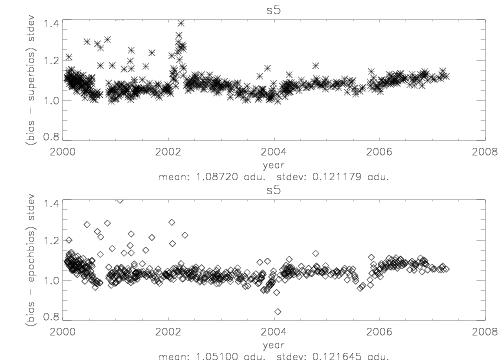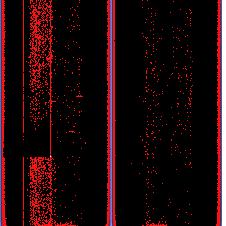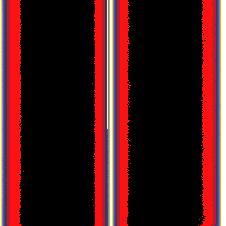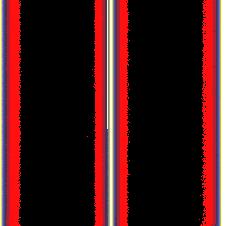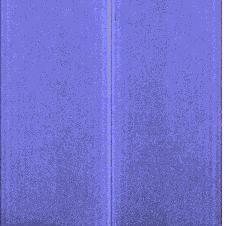Here's a poster that I made for the 2007 Chandra Calibration Workshop.
Why would you want a Superbias?
The onboard bias algorithm leaves artifacts from the particle background in the
bias maps. 
Occassionally the artifacts are quite striking (Peter keeps a list of "Bias Map Anomalies" here - but you need to be on the csr network to see it.).
Here's a sample from i0 in obsid 58768 
What's a Superbias?
A superbias is made out of many telemetered biases. The process is the same as that used in the lab to make biases out of raw frames.
- find the median value for each pixel
- calculate the standard deviation of all values below the median for each pixel
- average all values within +/- 3 sigma of the median value for each pixel
The resulting file has very little evidence of the background in it. Instead what's left are the features due to the electronics - a ripple in the FIs and a roll off in the BIs - and various cosmetic defects.
I made a mission long superbias, then compared each telemetered bias to the super bias. This suggests that the features due to the electronics and the cosmetics have been evolving for at least some of the devices. Because the mission is already being divided into "Epochs" for gain calibration purposes, that seems a logical division for the superbiases as well.
Is the Superbias any good?
For all of the cold, fullframe biases, I subtracted the superbias made from them and plotted the mean and standard deviation of that difference versus time. The lefthand plots are the mean of the difference. The righthand plots are the standard deviation of the difference. For each device, the top plot compares a mission long superbias to the telemetered biases and the bottom plot compares the epoch long superbiases to the telemetered biases.
Hmm.... How Odd.
Examining the superbias subtracted telemetered biases has turned up a number of interesting features. The ones I've noticed are listed here. I think that some are worthy of further investigation.
Bias and Background
Those of you familiar with Catherine's work on CTI monitoring may recognize the shape of the standard deviation plots. It looks very similar to the s3 high energy reject rate. Perhaps the FI bias maps can be used to track the background for each science run - especially for those where s3 is either not on, or not configured with the "normal" rejection criterion.
What was that funny blob on s3?
Once you subtract away the large spatial non-uniformity on the BIs, s3 is the "flattest" of the CCDs. But occassionally a few features pop up. A few were easy to figure out - Vega, for example. But there are also several biases with a glow (a few dozen adu high) close to the readout nodes. Oddly enough all of the biases with those features come from just two sets of targets, Cas-A and a set of snapshots "SHEEP". I'll put a picture up when I can. Probably not a big deal, but I am curious.
"Bimodal" Standard deviations on S1
While most of the s1 (bias - epoch bias) standard deviations are below 1adu,
many are up above 1.2 adu. Why?
Catherine has mentioned that she's seen something similar in the corner pixels.
Are they the same thing?
Do we care?
Are the electronics drifting?
In the lefthand side of the plots above - the plots of the means of the difference - the bias minus mission long superbias plots are not as flat as the bias minus epoch long superbias plots. Is this due to the changing background? Is it a change in the height of the ripples or rolloff? Is it telling us anything that we want to know?
Changes in the gain are already being tracked - can this add to that information?
Why does the s0 standard deviation plot look wrong?
The standard deviation of the differences from a mission long superbias goes off the scale for s0 in 2003. This is because of a set of pixels (maybe a 1/4 of a column) that became hot. Notice that compared to the epoch superbiases the plot is better behaved.
Where can I get a Superbias?
Super bias files are available to download here:
Where to go next
The next steps would be:
- compare fits to ECS data with super biases vs telemetered biases
- do some background investigation
- look further into the "odd" items listed above
Suggestions are welcome.
Last update: Thu May 17 15:19:55 EDT 2007



